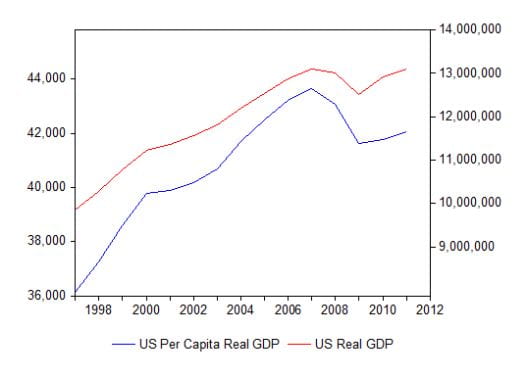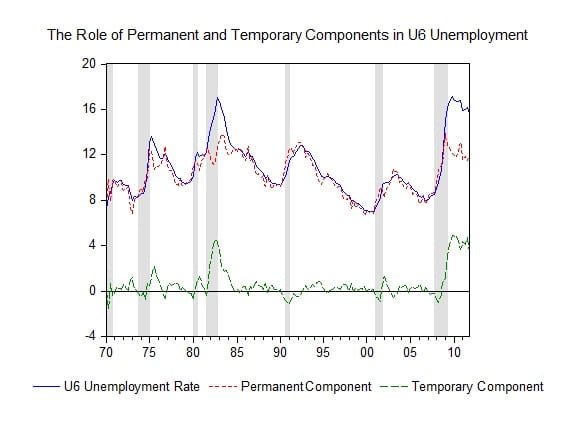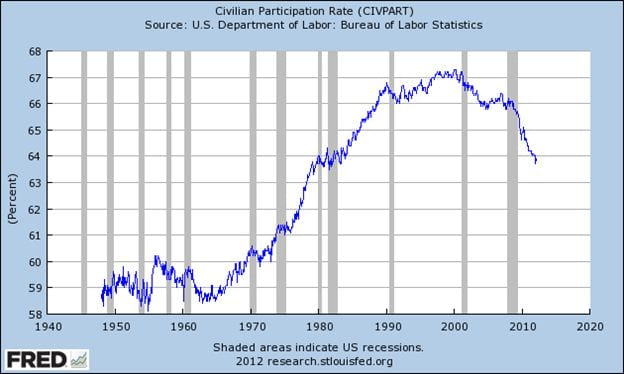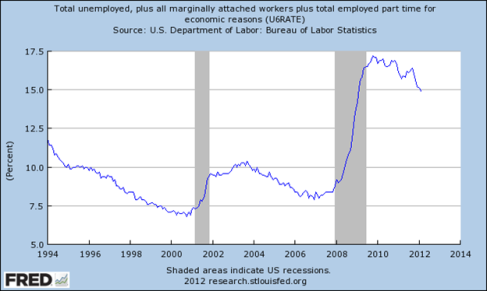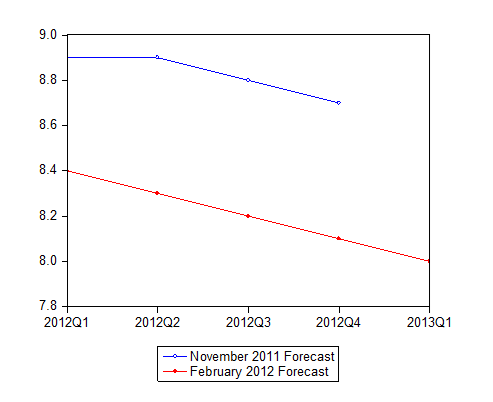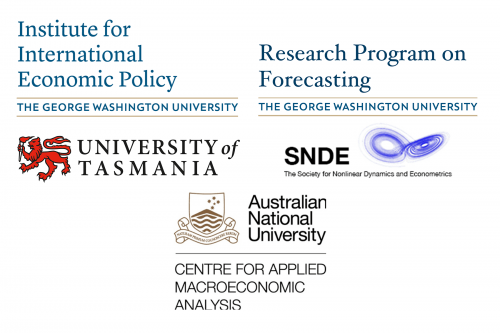The Institute for International Economic Policy hosted a discussion of the International Monetary Fund’s October 2021 World Economic Outlook titled “IMF World Economic Outlook: Recovery During a Pandemic – Health Concerns, Supply Disruptions, and Price Pressures.” This event featured John Bluedorn (IMF), Christoffer Koch (IMF), Tara Sinclair (GWU), Jean-Marc Natal (IMF), and Benjamin Jones (Northwestern University). This event was moderated by IIEP Director Jay Shambaugh.
The global economic recovery is continuing, even as the pandemic resurges. The fault lines opened up by COVID-19 are looking more persistent—near-term divergences are expected to leave lasting imprints on medium-term performance. Vaccine access and early policy support are the principal drivers of the gaps.
The IMF World Economic Outlook — the flagship publication of the IMF — details the state of the global economy and its prospects going forward. It also includes two analytical chapters considering key policy issues facing the world economy. Chapter 2 considers the appropriate policy mix as many countries face elevated or rising inflation. Chapter 3 examines how countries could use science and innovation policy to boost long run economic growth. This event presents an opportunity for policymakers and academics to consider these crucial issues.
Event Agenda
Welcoming Remarks
Jay Shambaugh, George Washington University
Chapter 1: Global Prospects and Policies
Presenter: John Bluedorn, International Monetary Fund
Chapter 2: Inflation Scares
Presenter: Christoffer Koch, International Monetary Fund
Discussant: Tara Sinclair, George Washington University
Chapter 3: Research and Innovation: Fighting the Pandemic and Boosting Long-Term Growth
Presenter: Jean-Marc Natal, International Monetary Fund
Discussant: Benjamin Jones, Northwestern University
General Q&A and Concluding Remarks
Moderated by Jay Shambaugh, George Washington University
About the Speakers:
 John Bluedorn is a deputy division chief on the World Economic Outlook in the IMF’s Research Department. Previously, he has been a senior economist in the Research Department’s Structural Reforms Unit, a member of the IMF’s euro area team in the European Department and worked on the World Economic Outlook as an economist, contributing to a number of chapters. Before joining the IMF, he was a professor at the University of Southampton in the United Kingdom, after a post-doctoral fellowship at the University of Oxford. Mr. Bluedorn has published on a range of topics in international finance, macroeconomics, and development. He holds a PhD from the University of California at Berkeley.
John Bluedorn is a deputy division chief on the World Economic Outlook in the IMF’s Research Department. Previously, he has been a senior economist in the Research Department’s Structural Reforms Unit, a member of the IMF’s euro area team in the European Department and worked on the World Economic Outlook as an economist, contributing to a number of chapters. Before joining the IMF, he was a professor at the University of Southampton in the United Kingdom, after a post-doctoral fellowship at the University of Oxford. Mr. Bluedorn has published on a range of topics in international finance, macroeconomics, and development. He holds a PhD from the University of California at Berkeley.

Christoffer Koch works in the Research Department of the International Monetary Fund. Prior to that he had spent a decade as an economist at the Federal Reserve Bank of Dallas. His policy and research interests are in macroeconomics, money and banking. He obtained his undergraduate degree from the University of St Andrews, and his PhD from the University of Oxford where he was a Rhodes Scholar.
 Jean-Marc Natal is Deputy Division Chief in the World Economic Studies Division in the IMF’s Research Department. Prior to joining the IMF, he was Deputy Director of Research at the Swiss National Bank where he advised the Board on quarterly monetary policy decisions and communication. Mr Natal has taught Monetary Theory and Policy at the University of Geneva and has published in various economics journals, including the Economic Journal and the Journal of Money, Credit and Banking. His research covers the study of monetary and exchange rate regimes, policy transmission, inflation dynamics and macroeconomic modeling. He holds a PhD in International Economics from the Graduate Institute of International Studies in Geneva.
Jean-Marc Natal is Deputy Division Chief in the World Economic Studies Division in the IMF’s Research Department. Prior to joining the IMF, he was Deputy Director of Research at the Swiss National Bank where he advised the Board on quarterly monetary policy decisions and communication. Mr Natal has taught Monetary Theory and Policy at the University of Geneva and has published in various economics journals, including the Economic Journal and the Journal of Money, Credit and Banking. His research covers the study of monetary and exchange rate regimes, policy transmission, inflation dynamics and macroeconomic modeling. He holds a PhD in International Economics from the Graduate Institute of International Studies in Geneva.
About the Discussants:
 Tara M. Sinclair is a faculty affiliate of the Institute for International Economic Policy and professor of economics and international affairs at the George Washington University, where she has been on faculty since earning her PhD in economics from Washington University in St. Louis in 2005. Professor Sinclair is a senior fellow at job search site Indeed, the co-director of the H. O. Stekler Research Program on Forecasting, a member of the Bureau of Labor Statistics Technical Advisory Committee, a research professor at the Halle Institute for Economic Research (IWH) in Germany, and a research associate at the Center for Applied Macroeconomic Analysis (CAMA). She has been a visiting scholar at the Federal Reserve Bank of St. Louis, a visiting associate professor at the University of Texas at Austin, and an academic visitor at the Australian National University and the University of New South Wales. Professor Sinclair also serves as the moderator for the monthly inflation meet-ups for the National Association for Business Economics. Professor Sinclair’s research focuses on developing new tools and data sources to improve decision making. Her early research built empirical models to study economic fluctuations and trends, and these models remain a continuing thread in her publications. As part of the Indeed Hiring Lab, Professor Sinclair uses Indeed’s unique labor market data to develop new economic indicators. As co-director of the H. O. Stekler Research Program on Forecasting, she evaluates real time economic data and forecasts with a focus on their role in policy. Professor Sinclair regularly speaks at conferences and with the press on issues related to forecasting, recessions, labor markets, big data, macroeconomics, and policy issues.
Tara M. Sinclair is a faculty affiliate of the Institute for International Economic Policy and professor of economics and international affairs at the George Washington University, where she has been on faculty since earning her PhD in economics from Washington University in St. Louis in 2005. Professor Sinclair is a senior fellow at job search site Indeed, the co-director of the H. O. Stekler Research Program on Forecasting, a member of the Bureau of Labor Statistics Technical Advisory Committee, a research professor at the Halle Institute for Economic Research (IWH) in Germany, and a research associate at the Center for Applied Macroeconomic Analysis (CAMA). She has been a visiting scholar at the Federal Reserve Bank of St. Louis, a visiting associate professor at the University of Texas at Austin, and an academic visitor at the Australian National University and the University of New South Wales. Professor Sinclair also serves as the moderator for the monthly inflation meet-ups for the National Association for Business Economics. Professor Sinclair’s research focuses on developing new tools and data sources to improve decision making. Her early research built empirical models to study economic fluctuations and trends, and these models remain a continuing thread in her publications. As part of the Indeed Hiring Lab, Professor Sinclair uses Indeed’s unique labor market data to develop new economic indicators. As co-director of the H. O. Stekler Research Program on Forecasting, she evaluates real time economic data and forecasts with a focus on their role in policy. Professor Sinclair regularly speaks at conferences and with the press on issues related to forecasting, recessions, labor markets, big data, macroeconomics, and policy issues.
 Benjamin F. Jones is the Gordon and Llura Gund Family Professor of Entrepreneurship, a Professor of Strategy, and the faculty director of the Kellogg Innovation and Entrepreneurship Initiative. An economist by training, Professor Jones studies the sources of economic growth in advanced economies, with an emphasis on innovation, entrepreneurship, and scientific progress. He also studies global economic development, including the roles of education, climate, and national leadership in explaining the wealth and poverty of nations. His research has appeared in journals such as Science, the Quarterly Journal of Economics and the American Economic Review, and has been profiled in media outlets such as the Wall Street Journal, the Economist, and The New Yorker. A former Rhodes Scholar, Professor Jones served in 2010-2011 as the senior economist for macroeconomics for the White House Council of Economic Advisers and earlier served in the U.S. Department of the Treasury. Professor Jones is a non-resident senior fellow of the Brookings Institution, a research associate of the National Bureau of Economic Research, and a member of the Council on Foreign Relations.
Benjamin F. Jones is the Gordon and Llura Gund Family Professor of Entrepreneurship, a Professor of Strategy, and the faculty director of the Kellogg Innovation and Entrepreneurship Initiative. An economist by training, Professor Jones studies the sources of economic growth in advanced economies, with an emphasis on innovation, entrepreneurship, and scientific progress. He also studies global economic development, including the roles of education, climate, and national leadership in explaining the wealth and poverty of nations. His research has appeared in journals such as Science, the Quarterly Journal of Economics and the American Economic Review, and has been profiled in media outlets such as the Wall Street Journal, the Economist, and The New Yorker. A former Rhodes Scholar, Professor Jones served in 2010-2011 as the senior economist for macroeconomics for the White House Council of Economic Advisers and earlier served in the U.S. Department of the Treasury. Professor Jones is a non-resident senior fellow of the Brookings Institution, a research associate of the National Bureau of Economic Research, and a member of the Council on Foreign Relations.
About the Moderator:
 Jay Shambaugh is Professor of Economics and International Affairs, and Director of the Institute for International Economic Policy at the Elliott School of International Affairs, George Washington University. His area of research is macroeconomics and international economics. He has had two stints in public service. He served as a Member of the White House Council of Economic Advisors from 2015-2017. Earlier, he served on the staff of the CEA as a Senior Economist for International Economics and then as the Chief Economist. He also spent 3 years as the Director of the Hamilton Project at the Brookings Institution. Jay is also a Faculty Research Fellow at the NBER and Non-Resident Senior Fellow in Economic Studies at Brookings. Prior to joining the faculty at George Washington, Jay taught at Georgetown and Dartmouth and was a visiting scholar at the IMF. He received his Ph.D. in economics from the University of California at Berkeley, an M.A. from the Fletcher School at Tufts, and a B.A. from Yale University.
Jay Shambaugh is Professor of Economics and International Affairs, and Director of the Institute for International Economic Policy at the Elliott School of International Affairs, George Washington University. His area of research is macroeconomics and international economics. He has had two stints in public service. He served as a Member of the White House Council of Economic Advisors from 2015-2017. Earlier, he served on the staff of the CEA as a Senior Economist for International Economics and then as the Chief Economist. He also spent 3 years as the Director of the Hamilton Project at the Brookings Institution. Jay is also a Faculty Research Fellow at the NBER and Non-Resident Senior Fellow in Economic Studies at Brookings. Prior to joining the faculty at George Washington, Jay taught at Georgetown and Dartmouth and was a visiting scholar at the IMF. He received his Ph.D. in economics from the University of California at Berkeley, an M.A. from the Fletcher School at Tufts, and a B.A. from Yale University.
IMF WEO Chapter Summaries
Chapter 1: Global Prospects and Policies
The global economic recovery continues amid a resurging pandemic that poses unique policy challenges. Gaps in expected recoveries across economy groups have widened since the July forecast, for instance between advanced economies and low-income developing countries. Meanwhile, inflation has increased markedly in the United States and some emerging market economies. As restrictions are relaxed, demand has accelerated, but supply has been slower to respond. Although price pressures are expected to subside in most countries in 2022, inflation prospects are highly uncertain. These increases in inflation are occurring even as employment is below pre-pandemic levels in many economies, forcing difficult choices on policymakers. Strong policy effort at the multilateral level is needed on vaccine deployment, climate change, and international liquidity to strengthen global economic prospects. National policies to complement the multilateral effort will require much more tailoring to country-specific conditions and better targeting, as policy space constraints become more binding the longer the pandemic lasts.
Chapter 2: Inflation Scares
Despite recent increases in headline inflation in both advanced and emerging market economies, long-term inflation expectations remain anchored. Looking ahead, headline inflation is projected to peak in the final months of 2021 but is expected to return to pre-pandemic levels by mid-2022 for most economies. But given the recovery’s uncharted nature, considerable uncertainty remains, and inflation could exceed forecasts for a variety of reasons. Clear communication, combined with appropriate monetary and fiscal policies, can help prevent “inflation scares” from unhinging inflation expectations.
Chapter 3: Research and Innovation: Fighting the Pandemic and Boosting Long-Term Growth
How can policymakers boost long-term growth in the post–COVID-19 global economy? This chapter looks at the role of basic research—undirected, theoretical, or experimental work. Using rich new data that draw on connections from individual innovations and scientific articles, this chapter shows that basic research is an essential input into innovation, with wide-ranging international spillovers and long-lasting economic impacts.
